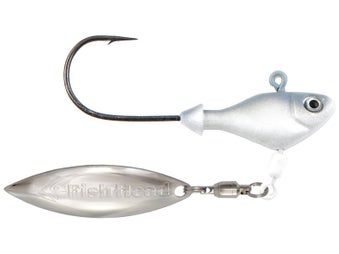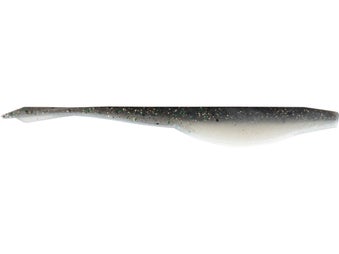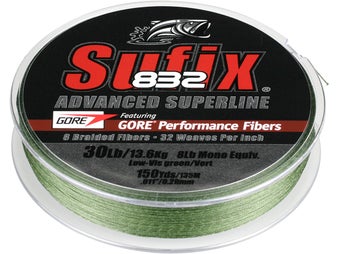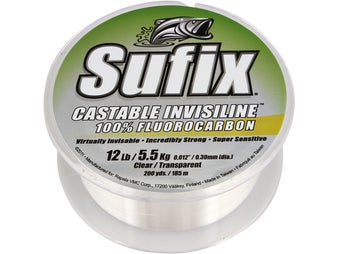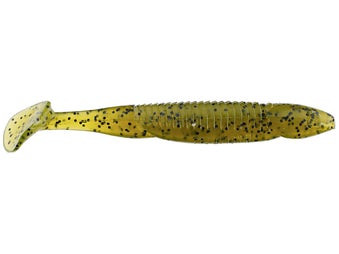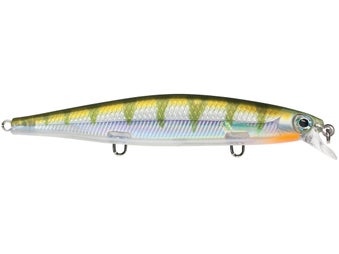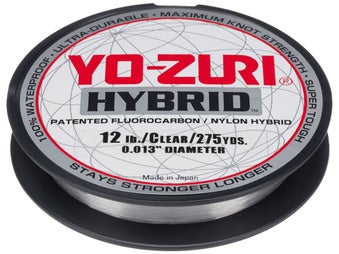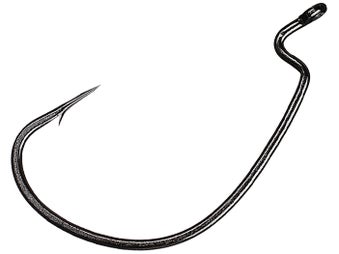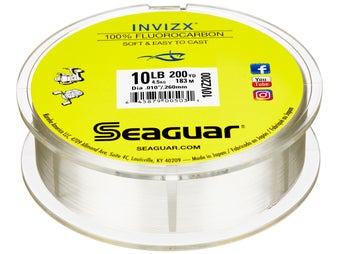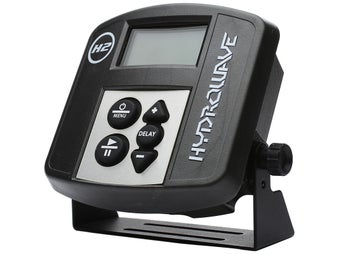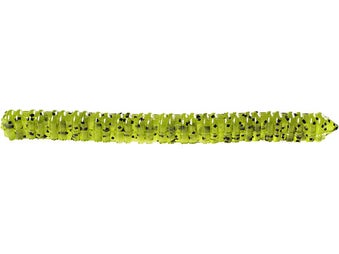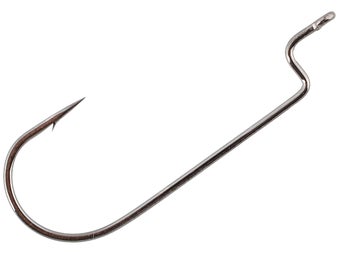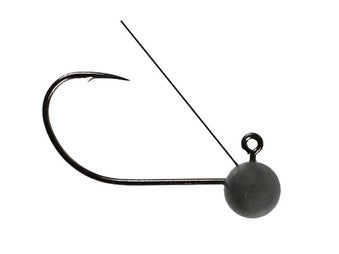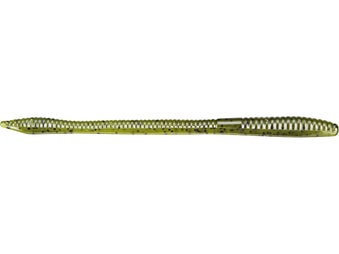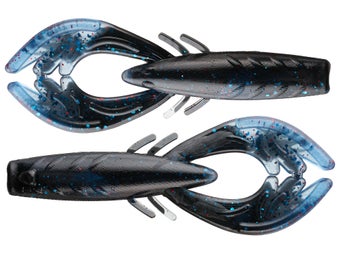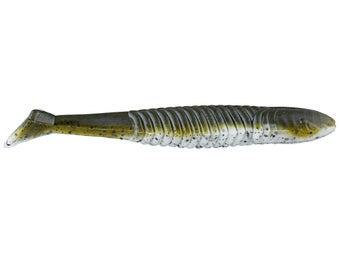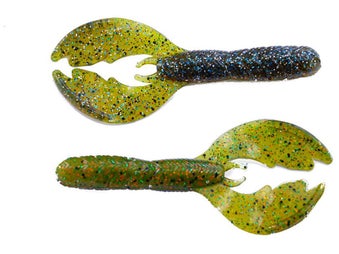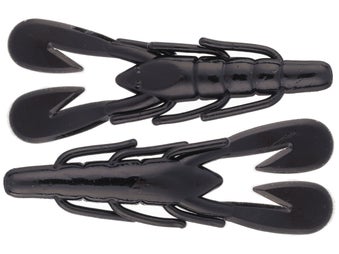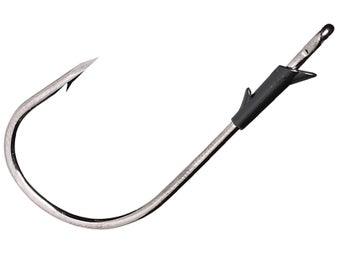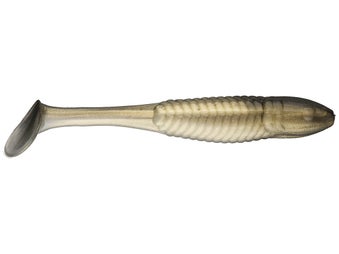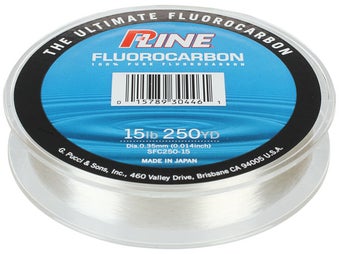Dave Lefebre Wins FLW Tour Lewis Smith Lake
Dave Lefebre Wins FLW Tour Lewis Smith Lake
Lefebre called his practice "pretty good," but was quick to point out he made the same assessment about his practice at Lake Toho and he wound up xx there. "It's like I told my wife, 'I feel pretty good about this one, but you know how that goes,'" he joked. He had a good vibe after catching around 24 pounds or largemouth flipping bushes on the first day when it rained non-stop. He backed that up with 17 to 18 pounds each of the next two days. "I started seeing some big fish move up the last two days," he said. He also located a couple schools of spots, one over 80 to 120 feet of water and the other in around 40. "I found those while running to the back of a creek looking for bushes to flip," he said. "I just saw a dimple on the water and put down and idled around and sat for a few minutes and then one blew up. I thought it was a striper so I kept waiting and another one blew up. I figured, 'What the heck? It's practice. Let's catch a striper.' I made a couple throws and caught a 5-pound spot." He came out of practice prepared to have a jig rod in his hand most of the time. "I figured two things could happen - either I'd catch a giant limit of spots or flip bushes and catch them that way, " he said. "Every rod on my deck for day 1 was a jig and I wound up never getting a bite on a jig."
Competition:
Lefebre started off the event with a 14 1/2-pound bag, which put him in 23rd place, however, it was the discovery he made about the herring that turned the tide for him to open the event. "I didn't know it until the first day, but there were certain pockets where the herring would spawn real close to shore in the mornings," he said. "They were rare, but I eventually found five pockets that had them. I was still expanding on the final day, but they were around buck brush and bushes and there had to be some big, round rocks or boulders under water. "It was so cool because nobody seems to know on what or where they spawn." He didn't have a bite until 11 and, "it wasn't like I had to flip for two hours to figure out they weren't going to bite," he said. "I got there, looked at the water and instantly knew I had to figure out a way to catch fish. I went from four rods on the deck to 17 within an hour. I just kept pulling stuff out." He eventually went after the schools of spots with a Fish Head Spin in the early morning, then spent a couple hours trying to locate new areas where the herring were spawning. He focused most of his time in Rock Creek. "As the days went on, especially on Saturday, I was spending that dead time looking for spawning herring," he added. "They didn't spawn until 8 or 8:30 every day. It never happened early so that gave me enough time to catch some spots and run those pockets looking for spawners." He said he couldn't a bite while fishing where the herring were spawning like someone might if shad were in the midst of a spawn. "By Saturday, I would go back later in the day to where those herring were spawning and that's where the big largemouth were," he added.
He had a good day Friday with 15-14 to make the Top-20 cut in 12th place, but had numerous big fish get off, including one he figured was over 7 pounds. His co-angler that day was Hoyt Tidwell, who usually practices with Andy Morgan and won the co-angler title at Smith in 2013. Lefebre said Tidwell told him he'd never seen so many big fish in one area in his life. "There were countless fish from 5 1/2 to 7 pounds in there," Lefebre said. He nearly caught a double on a Rapala wakebait as moments after a 4-pounder hit the bait, he noticed a bigger fish following along. Lefebre slowed his retrieve in hopes the other fish would grab one of the treble hooks, but he eventually just landed the 4-pounder. He moved into 7th on Saturday with a 15-10 stringer following the same game plan of fishing for spots early on, then biding his time before going after the largemouth. "On Saturday, I really capitalized on it," he said. He had some bedding fish pinpointed that he could've fished for Sunday, but with his confidence growing in what he'd been doing he opted to stay with his plan. Facing an 8 1/2-pound deficit, he figured he'd need in excess of 20 pounds to put a scare into the leaders. He worked over the shallower school of spots in the morning and by 2 o'clock he had between 15 and 16 pounds in the boat. That's when he encountered another pair of fish that both wanted his bait. It was the same scenario that he experience Friday, only this time Lefebre managed to get the second (bigger) fish to eat his bait. The 10 pounds of fish he netted equaled a 4-plus pound upgrade and took him over the 19-pound mark. His final-day stringer was the largest of the day by nearly 5 pounds.
Winning Pattern:
When targeting the spots with the Fish Head Spin, he was making long casts, but wasn't letting it fall very far. "I'd let it get down maybe 5 feet at the most," he said. "I was fishing it with the rod tip up. It wasn't really a steady retrieve. It was more of a reel, reel and snap. I thought it was a little late for them to be eating a Fish Head with the water temperature being what it was." He fished out of a borrowed boat for the second straight event, but the one he used at Smith was actually one of his old tournament boats. The gentleman he sold it to was kind enough to allow Lefebre to use it for the week. As the tournament got under way, Lefebre wasn't sure which direction he was going in as far as what tackle to bring. "I don't usually like to take a lot of stuff, but I had 20 Plano boxes in the boat on day 1," he said. "One of the keys was I really had to adjust and mess around in that clear water. Instead of just staying alive with spotted bass, I wanted to see if I could get some of those bigger largemouths to bite." Prior to settling on the Rapala wakebait, he went through numerous types of baits in an attempt to trigger the largemouths to commit. "I tried a walking bait, a popper, a Texas-rigged fluke, a shaky-head and a Senko," he said. "The wakebait is subtle. I tied it on at the right time. It was one of those deals where I couldn't get a bit on anything else. I even tried a Horny Toad and then went to the wakebait. I had one follow it on my third or fourth cast and then I caught one on it."
Winning Gear:
Wakebait gear: 7'1" medium-heavy 13 Fishing Envy Black casting rod, 13 Fishing Concept E casting reel (7.3:1 ratio), 30-pound Sufix 832 Advanced Superline, Rapala BX Waking Minnow (blueback herring). He also mixed in a Bomber Long A to give the fish a different look as the water cleared up. To mimic the blueback herring around the largemouth, Lefebre wanted a big bait since the herring he was seeing weren't small by any means. "Some of those suckers were 10 inches long," he said. "They're big and they'd spawn in a ball. There'd be thousands of them in a circle doing their thing." He opted for the 5 1/4-inch BX Waking Minnow because he could make long casts with it and working it was simple. "It was a no-brainer," he said. "You don't need the perfect line or rod or reel or have to know the perfect cadence for it to work. And you can throw it a mile."
Underspin jig gear: 7'6" medium-heavy 13 Fishing Omen Black casting rod, same reel, 12-pound Sufix Castable Invisiline 100% Fluorocarbon line, 1/2 oz. Sworming Hornet Fish Head Spin (albino), Gary Yamamoto Custom Baits D Shad (blue pearl, white). He had better success with the blue pearl D Shad when it was sunny. When it was cloudy and windy, he switched to the white.
Main Factor: "It was having a totally open mind and attitude and not panicking. I think I did panic, but adjusted to my panic on day 1 when the water cleared up and I realized I couldn't flip. Being able to figure them out was a big key."
Performance Edge: "Ever since Power-Pole came out with their 10-foot models, I've had them on the my boat. The boat I used this week had 10-footers on it and when I'd get to where I was fishing, I'd put them down in 15 feet of water and when they touched, that's where I would start catching them. I could sit in one spot and being able to be still and quiet was really important. Another big edge I had was the moss back lenses in my Solar Bat sunglasses. It was critical to see those big fish from very far away so I could make the perfect cast and trigger the bites."
Lewis Smith Lake Winning Pattern BassFan 3/31/15 (Todd Ceisner)
Clark Wendlandt's Pattern, Baits & Gear
Swimjig gear: 7'1" medium-heavy Cabela's Tournament ZX swimjig/spinnerbait casting rod, Verano casting reel, 20-pound Yo-Zuri Hybrid line, 1/4-oz. 4x4 Jigs swimjig (white), Reaction Innovations Skinny Dipper trailer (pearl blue shad).
Jerkbait gear: 6'9" medium-action Cabela's Tournament ZX jerkbait/topwater casting rod, Cabela's Tournament ZX casting reel, 10-pound Yo-Zuri Hybrid line, Yo-Zuri 3DB Series jerkbait (prism shad), Rapala Shadow Rap (albino shiner).
Sight-fishing gear: 7'2" medium-heavy Cabela's Tournament ZX jig/worm casting rod, same reel as jerkbait, 17-pound Yo-Zuri Hybrid line, 1/4-oz. unnamed tungsten worm weight, 4/0 Owner Wide Gap Plus worm hook, 4" unnamed tube (white and green-pumpkin).
Main factor: "Deciding to fish for suspended fish instead of fish that were on the bottom."
Performance edge: "Those Cabela's rods are fantastic. I like how they feel and they make casting really easy."
Jason Reye's Pattern, Baits & Gear
Swimbait gear: 7'1" medium-action G. Loomis GLX 852 casting rod, Shimano Metanium casting reel, 6-pound Seaguar InvizX fluorocarbon line, 1/8- and 3/16-oz. unnamed jig heads, 2.8" and 3.3" Keitech Swing Impact FAT swimbaits. He also had a swimbait rigged up on a G. Loomis NRX 822 spinning rod paired with a Shimano Stella spinning reel.
Main factor: "Just fishing in a good clean mental state and leaving everything wide open and adapting to the daily conditions. To me, coming in with positive attitude was key. I had some momentum coming from Toho as well. I really believe fishing is 95 percent mental and the other is skill and ability."
Performance edge: "I think my HydroWave played a big role is keeping those schooling fish going. I had it on 30-second loop on the frenzy shad setting. When I'd pull in and drop the trolling motor and look over see nothing going on, then all of a sudden you'd see one raise, I knew it was working. If it puts one bass in the livewell that makes the difference, then it's worth it."
Tracy Adam's Pattern, Baits & Gear
Sight-fishing gear: 7' medium-heavy Cashion Fishing Rods casting rod, Pro Qualifier casting reel (6.4:1 ratio), 20-pound XPS fluorocarbon line, 5/16-oz. XPS tungsten flipping weight, 4/0 Gamakatsu offset worm hook, Zoom Centipede (watermelon seed). When working on fish he could see, Adams would pitch the bait past the fish and work it back close to the bed. "It just depended on the fish," he said. "I'd work some fast and other slow."
Wacky gear: 6'6" medium-action Cashion Fishing Rods spinning rod, Pro Qualifier spinning reel, 6-pound XPS fluorocarbon line, 1/16-oz. Jackall Weedless Wacky Jig Head, Zoom Trick Worm (watermelon seed).
Main factor: "Just being patient with that wacky worm. It was a slow go for sure."
Performance edge: "My Nitro boat and Mercury performed flawlessly all week."
Scott Marten's Pattern, Baits & Gear
Sight-fishing gear: 7' heavy-action Okuma TCS Scott Martin Signature Series casting rod, Okuma Komodo casting reel (7.3:1 ratio), 20-pound P-Line fluorocarbon line, 1/2-oz. unnamed tungsten flipping weight, 4/0 Lazer TroKar TK130 flipping hook, Bruiser Baits Crazy Craw (green-pumpkin), Bruiser Baits Hog (green-pumpkin), Zoom Ultra Vibe Speed Craw (white).
Swimbait gear: 7'11" medium-heavy Okuma TCS Scott Martin Signature Series casting rod, Okuma Helios TCS casting reel, 8-pound P-Line fluorocarbon line, 1/4-oz. unnamed jig head, Bruiser Baits Baby Swimmer (blue midnight). He also caught a key 3-pounder drop-shotting the Baby Swimmer on the final day. "I couldn't get them to eat a worm," he noted.
Main factor: "Knowing that I could go out and do what I love to do and I didn't have to stress out about if my area will hold up. I felt like the whole lake was going to be productive."
Performance edge: "The new Panoptix from Garmin was key. It allowed me to catch fish I otherwise wouldn't have caught. Also, people think of Smith Lake and think they'd never have a need for Power-Poles. Without a doubt, I wouldn't have caught half the fish I caught without my Power-Poles. With the wind blowing, they paid for themselves this week."
